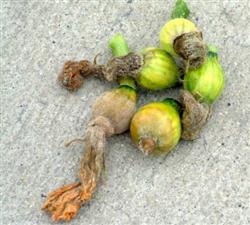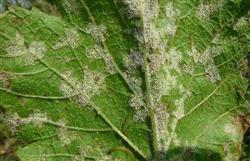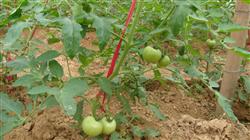Pumpkin planting: how to control the botrytis cinerea of pumpkin?

How to prevent and cure the botrytis cinerea of pumpkin? Why does gray mold occur? Please introduce that Botrytis cinerea mainly occurs on the fruit. Most of the injured fruits begin to rot from the failed flowers and grow a grayish brown mildew layer, and then spread to the young fruit, first in the melon tip, and then to the upper part, making the young fruit soft and rotten. The growth of the injured fruit stops, the fruit tip is rotten, and the whole fruit is rotten. Botrytis cinerea also occasionally occurs on the leaf surface, mostly with the falling diseased flowers as the center to form large near-circular disease spots, with a small amount of gray mold layer on the surface. Rotten flowers and rotten fruits fall off and attach to the stem vine, which can cause the stem vine to turn brown and rot. Botrytis cinerea likes lower temperature and higher humidity, the optimum temperature is about 20 ℃, and the air humidity is above 90%. It is not easy to develop the disease when the temperature is higher than 30 ℃ or below 4 ℃ and the air humidity is below 90%. There are many cloudy and rainy days in spring in the north and other places, and it is easy to develop the disease when the temperature is low. After mid-March in South China, the disease developed rapidly when the temperature was 10-15 ℃ and it was rainy. Pathogens are most likely to invade from plant wounds, wilting petals, weak and dead tissues. The pathogen overwintered on the diseased body or in the soil, and could spread with airflow, water splashing and field farming operations in the following year. Pumpkin Botrytis cinerea can be controlled with reference to the following methods: 1. Cultivation measures and environmental control in the protected field: pay attention to ventilation and moisture discharge in the facilities, so that the air humidity is less than 85%, and the temperature is controlled at 26-30 ℃ during the day to reduce the occurrence of the disease. High border plastic film mulching cultivation is used to irrigate dark water, drip irrigation can be used if possible, and non-flooding irrigation can be used to prevent excessive humidity in the field. The temperature in the facility can sometimes be increased by up to 33 ℃, which can inhibit the production of bacteria. In daily management, remove diseased leaves, diseased flowers, diseased fruits and yellow leaves in time, clean them up, bury them or burn them at any time. Thoroughly remove the sick and residual bodies in the field when changing stubble. 2. Chemical control: carbendazim, Dysen zinc, chlorothalonil, methyl thiophanate, propofol, carbendazim, thiram, trimethoprim and other pesticide sprays can be used, and chlorothalonil smoke can also be used. It can also be controlled by spraying powder such as carbendazim dust, chlorhexil dust, chlorothalonil dust and so on. Specific methods can be referred to the previous disease control. Click to get more pumpkin planting techniques click to get more vegetable planting techniques
- Prev

Pumpkin planting: how to prevent and cure pumpkin Phytophthora?
How to prevent and cure pumpkin Phytophthora? Why does pumpkin Phytophthora occur? Please introduce that pumpkin Phytophthora is mainly caused by spring pumpkin, especially in rainy years, poor drainage and often causing large area rotten melon. The disease not only harms pumpkins, but also harms cucumbers, cucumbers, watermelons and so on, and often occurs mixed with Fusarium wilt. ...
- Next

Tomato planting techniques: what should we pay attention to when planting summer tomatoes?
What should we pay attention to when planting summer tomatoes? Please guide the over-summer tomato growing season in the high temperature season, the prevalence of diseases such as virus disease, stem rot and cotton blight, the outbreak of aphids, whitefly, mites and other pests, and the effects of high temperature, strong light and dry environment. The planting net sorted out two points that should be paid attention to in the summer.
Related
- Where is it suitable to grow horseradish in China? it is expected to see the middle altitude horseradish in Alishan.
- How to prevent tomato virus disease reasonably? (Control methods included)
- Many people like to plant towel gourd on the balcony. What are the main points of this method and management?
- What crops can chili peppers be mixed with?
- Fertilization techniques and matters needing attention in Tomato
- What are the grafting techniques for peach seedlings in spring?
- Harm and control methods of root swelling disease of Chinese cabbage
- What are the pests of sweet potatoes? How to prevent and cure it?
- Symptoms, causes and Control methods of navel Rot in Tomato
- The cause of "Cucumber rotten bibcock" in Farmers' planting Cucumber and its Control Plan

